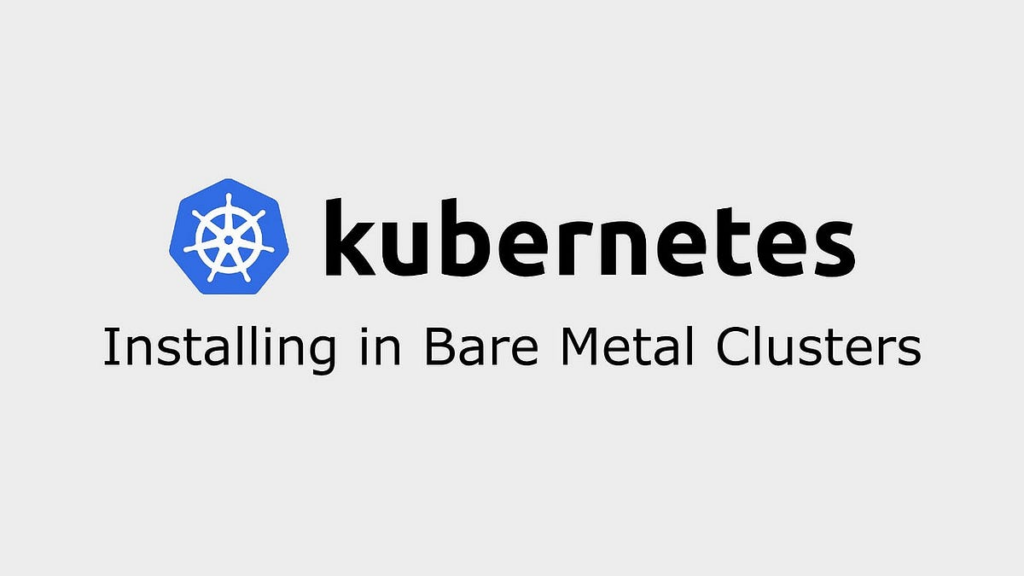Kubernetes Bare Metal Installation and Maintenance: Your Ultimate Guide
Hello, tech aficionados! Are you ready to dive into the thrilling world of Kubernetes installation on bare metal? ? With this guide, you’ll get hands-on with Kubernetes, mastering the installation and maintenance processes without needing to rely on cloud services. Plus, we’ll sprinkle some practical tips to keep your clusters fit and resilient! Let’s get that K8s party started!

1. Introduction to Kubernetes
Kubernetes, commonly referred to as K8s, is an open-source container orchestration platform. It automates the deployment, scaling, and management of containerized applications. Running Kubernetes on bare metal means setting up your infrastructure without virtualization, delivering you closer control over your hardware.
2. Prerequisites
Before we jump in, ensure you have the following in place:
- At least three physical machines (or virtual machines if you’re comfortable scaling down).
- Ubuntu 20.04 installed on all machines.
- A stable internet connection for downloading dependencies.
- Root or sudo access to all machines.
3. Setting Up Your Environment
3.1 Updating Your System
First things first, let’s ensure your system is up-to-date:
sudo apt update && sudo apt upgrade -y3.2 Installing Docker
Docker is the container platform that will run our Kubernetes pods. Install Docker using the following commands:
sudo apt install -y docker.io
sudo systemctl enable docker
sudo systemctl start docker
3.3 Installing Kubernetes Components
We’ll need kubeadm, kubelet, and kubectl. These are the essential components for setting up and managing Kubernetes clusters.
sudo apt-get update && sudo apt-get install -y apt-transport-https curl
curl -s https://packages.cloud.google.com/apt/doc/apt-key.gpg | sudo apt-key add -
echo "deb http://apt.kubernetes.io/ kubernetes-xenial main" | sudo tee -a /etc/apt/sources.list.d/kubernetes.list
sudo apt-get update
sudo apt-get install -y kubelet kubeadm kubectl
sudo apt-mark hold kubelet kubeadm kubectl
4. Initializing the Master Node
On your designated master node, initialize the cluster:
sudo kubeadm init --pod-network-cidr=10.244.0.0/16After initialization, you should see a command with a token to join worker nodes. Keep this safe, as it will be used later.
4.1 Setting Up kubeconfig for kubectl
Run the following commands to configure kubectl on the master node:
mkdir -p $HOME/.kube
sudo cp -i /etc/kubernetes/admin.conf $HOME/.kube/config
sudo chown $(id -u):$(id -g) $HOME/.kube/config
5. Setting Up Networking with Flannel
We’ll use Flannel for the pod network. Deploy Flannel using the following command:
kubectl apply -f https://raw.githubusercontent.com/flannel-io/flannel/master/Documentation/kube-flannel.yml
6. Joining Worker Nodes
On each worker node, run the join command that you copied earlier. It will look something like this:
sudo kubeadm join <MASTER_IP>:6443 --token <TOKEN> --discovery-token-ca-cert-hash sha256:<HASH>
7. Verifying the Cluster
On your master node, run:
kubectl get nodesYou should see all your nodes listed as ‘Ready’.
8. Maintenance Tips
8.1 Regular Updates
Keep your system and Kubernetes components updated. Regular updates ensure security patches and improvements are in place.
sudo apt update && sudo apt upgrade -y8.2 Monitoring
Use tools like Prometheus and Grafana for monitoring your cluster’s health and performance. They provide insightful metrics on resource usage and help in diagnosing issues early.
8.3 Backups
Automate backups of your configuration and data. Tools like Velero can assist in backing up and restoring your Kubernetes cluster.
Learn more about Velero here.
8.4 Security Best Practices
Enforce strong security practices by:
- Regularly rotating secrets.
- Using Role-Based Access Control (RBAC) to manage permissions.
- Keeping your nodes’ OS and Kubernetes updated.
Conclusion
Congrats! ? You’ve set up Kubernetes on bare metal and learned the essentials of keeping it healthy and secure. The world of Kubernetes is vast and continues to evolve, so there’s always more to explore. Keep experimenting, stay curious, and happy orchestrating!
If you’ve enjoyed this guide and want to delve deeper into the Kubernetes ecosystem, check out other resources and keep tuning into the latest updates. The world of K8s is just a click away!


